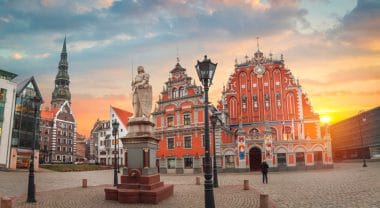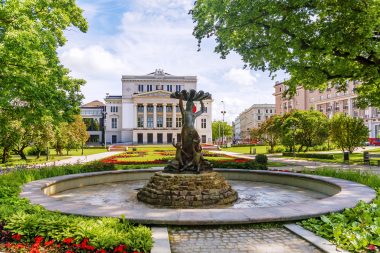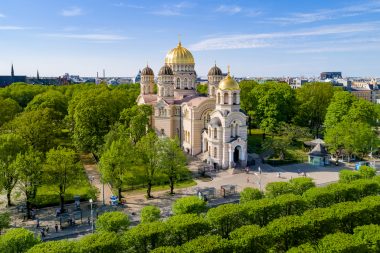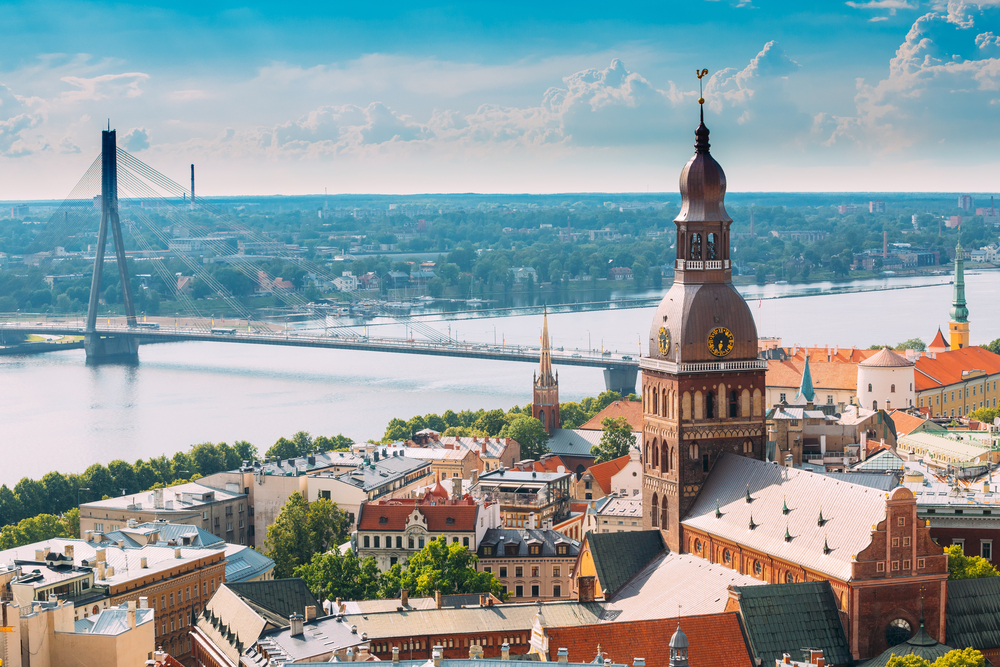The capital of Latvia is located on the southern shore of the Gulf of Riga, which is named after it. It was founded in the Middle Ages by German merchants and is an old Hanseatic city. Riga has experienced an eventful history, which can still be found in many places in the city today. Riga was initially the capital of the Republic of Livonia before becoming the capital of the Republic of Latvia for the first time.
After the Second World War, the city became the center of the Latvian SRR, before becoming the capital of the current republic again since 1991. Riga is still considered an insider tip among European capitals, but the city is becoming increasingly popular with visitors and was one of the European Capitals of Culture in 2014. From Germany , Riga can be reached by plane, the flight time is about 2 hours. You can also travel to Riga by car, ferry or train. Once in the city, visitors can expect a well-developed local transport network that opens up every corner of the city. Riga is now home to about 700,000 people and especially the younger generations speak English very well and are often very helpful and open-minded towards visitors.
Top Attractions in Riga
The Old Town of Riga

One of the most beautiful corners of the Lithuanian capital is without question the picturesque Old Town. It is a UNESCO World Heritage Site and can be easily accessed on foot. Many of the city’s most famous sights are also located here. Walking through the historic alleys, you can discover some of Riga’s most famous buildings and places, as well as hidden shops and cafes. The streets are lined with old merchant and historic gabled houses and after only a short time, visitors feel transported back to earlier times.
The Cathedral Square
In the middle of Riga’s Old Town is the Cathedral Square, one of the most impressive and largest squares in the city. On the edge of the Cathedral Square is its namesake, the Riga Cathedral Church from 1211. Since it has been rebuilt, repaired and renovated several times in the course of its long history, the elements from numerous eras can be seen today in the impressive sacred building. Among them are influences from the early Gothic, Baroque and late Romantic periods. Directly opposite the cathedral is the Riga Stock Exchange. Built between 1852 and 1855, the building immediately catches the eye thanks to its red color.
The Jakobs Barracks, the Powder Tower and the Swedish Gate

On the outskirts of the Old Town is the longest building in Riga, the so-called Jacob’s Barracks. Opposite the building, you can also visit a still preserved part of the Riga city wall with the Swedish Gate, the only remaining city gate in Riga. Around the Schwedentor there are numerous cafés and restaurants that invite you to linger and relax. In addition, the Riga Powder Tower is also in the immediate vicinity. It was once one of the city’s defensive towers and is now the last remnant of the former fortress that can still be visited. The Powder Tower is now a war museum.
The city park and Basteiberg
The city park can be reached directly from the Jakobs barracks. In its center is the Bastei Hill, also called Bastejkalns. This mountain was built between 1857 and 1859 as a replacement for a sandy defensive system and today offers a wonderful view over the city park. The park itself offers a welcome calm from the hustle and bustle of the streets and is great for a relaxing stroll or picnic. The park has numerous paths, benches and small bridges. You can also take boat trips on a canal that runs through the park.
The Wooden Houses District
The wooden houses district of the Latvian capital is a bit off the beaten track, but is still well worth seeing. Here you can really feel the long and eventful past of the city. On a walk through the district, almost 2000 wooden houses can be discovered, some of which have already been extensively renovated, others are still in their original state. There are also such wooden houses in the Kalnciema district of the city. Known for its art scene, this neighbourhood also has plenty of trendy studios and hip bars. At the frequent markets, you can buy local products and taste various Latvian and Baltic specialties.
The Cathedral of the Nativity of Christ

The Russian Orthodox Cathedral of the Nativity in Riga is the largest cathedral in the entire Baltic States. It was built between 1876 and 1883 and its construction was personally confirmed by Tsar Alexander II. During the occupation of Latvia in the First World War, the cathedral was briefly used as a Protestant house of prayer, but shortly afterwards it was returned to its original purpose. The 43-metre-high bell tower can be seen over large parts of the city. The cathedral can be visited and houses numerous art treasures inside.
St. Peter’s Church with the Bremen Town Musicians
On the site where the imposing St. Petri Church stands today, the first wooden church was already located in 1209. Since then, the churches on this square have changed shape several times until St. Peter’s Church finally got its present form at the end of the 17th century. Since the church was gradually completed, numerous elements of different eras can also be seen in it. The church was severely damaged in the Second World War and was not rebuilt until 1973. In parts, the reconstruction even continues to this day. In order to be able to visit the church from the inside, a fee must be paid. Behind the church there is also a sculpture of Bremen’s famous city muscines. This is a gift from the Hanseatic City of Bremen to the Latvian capital.


